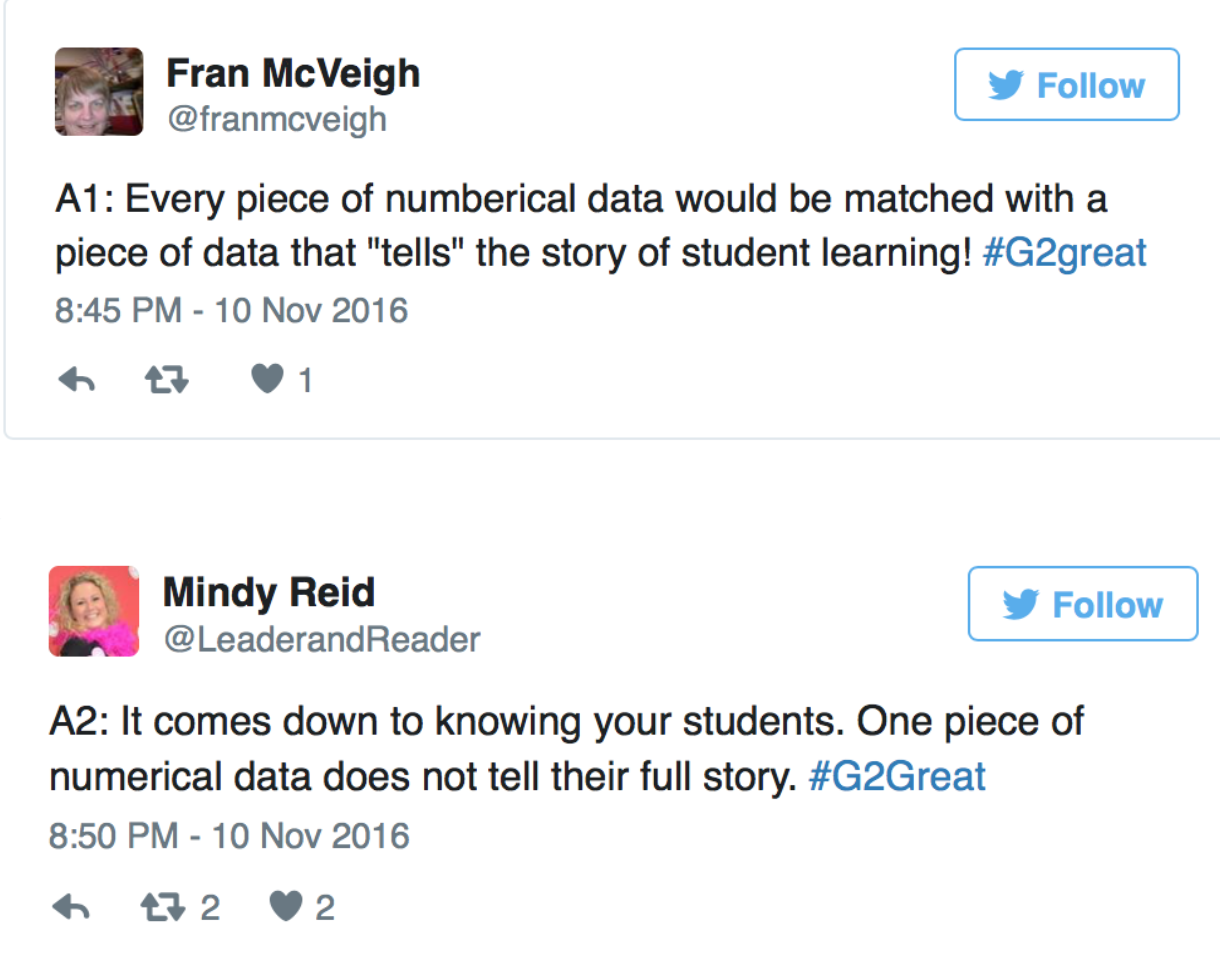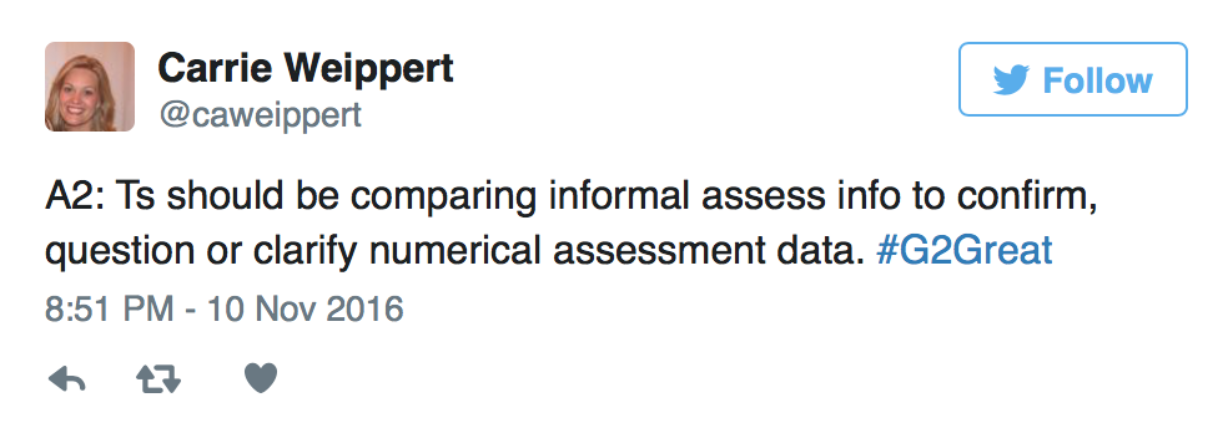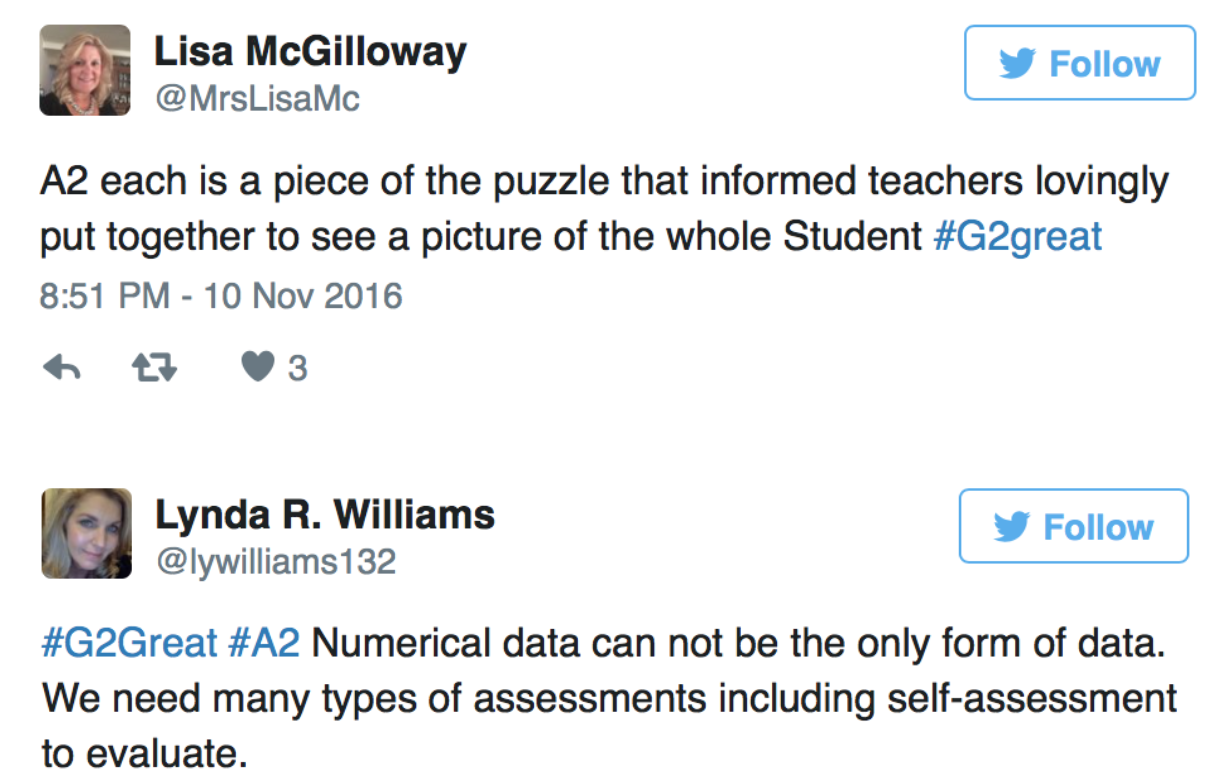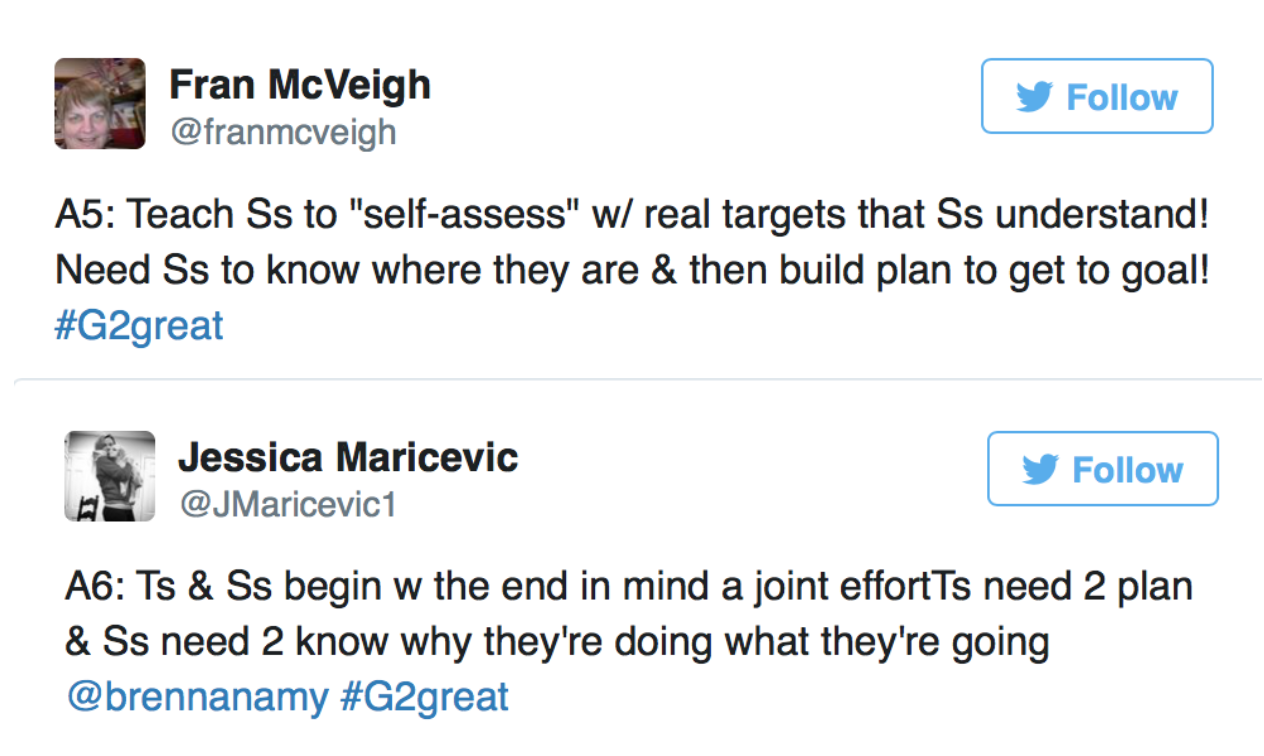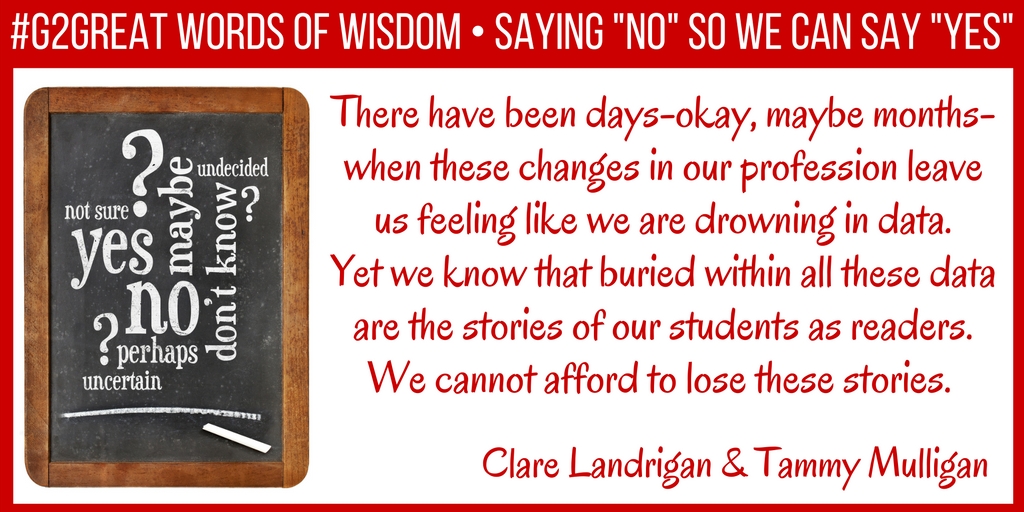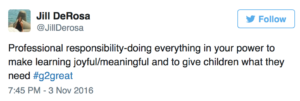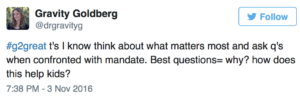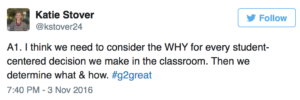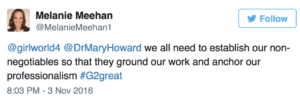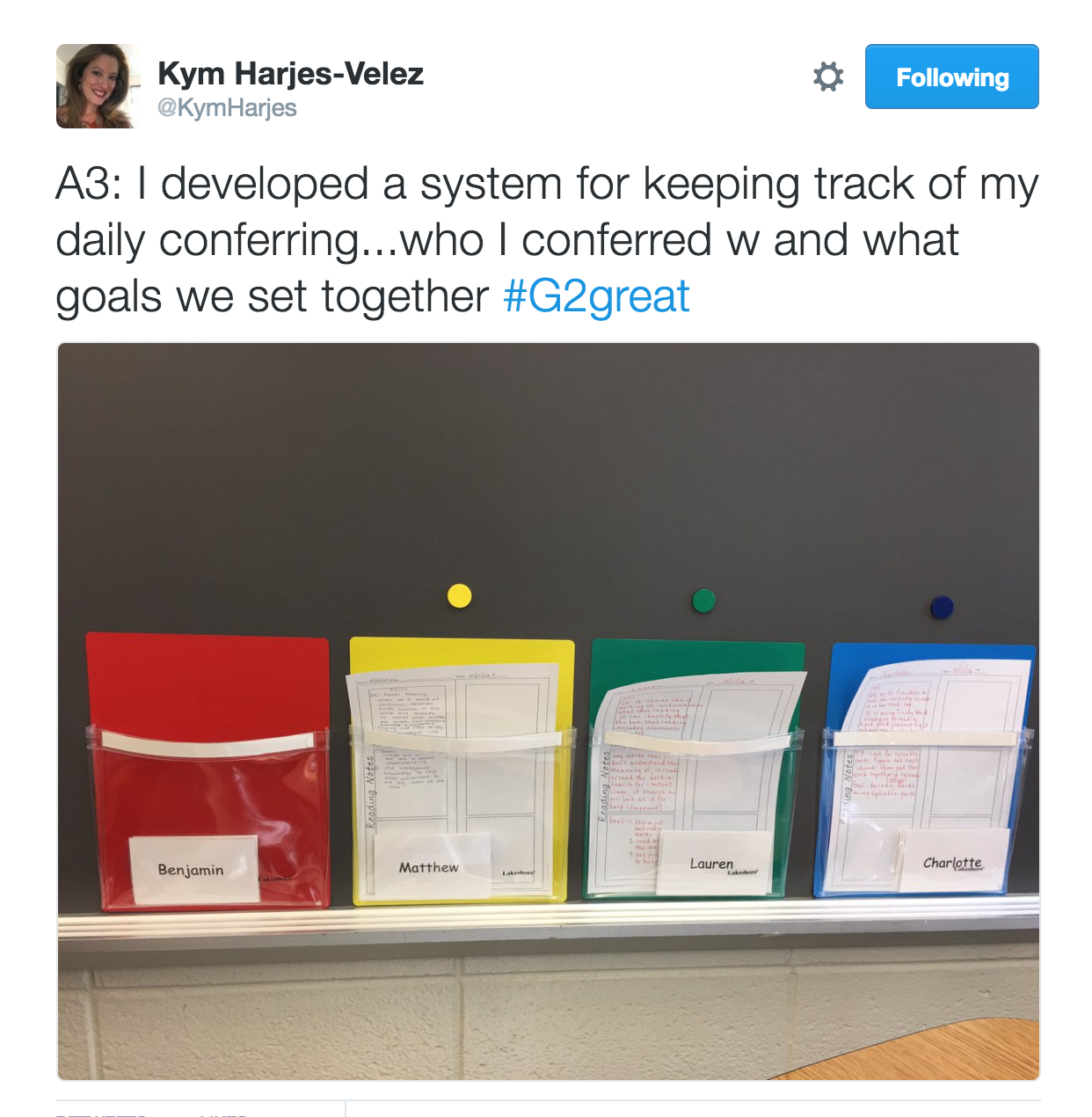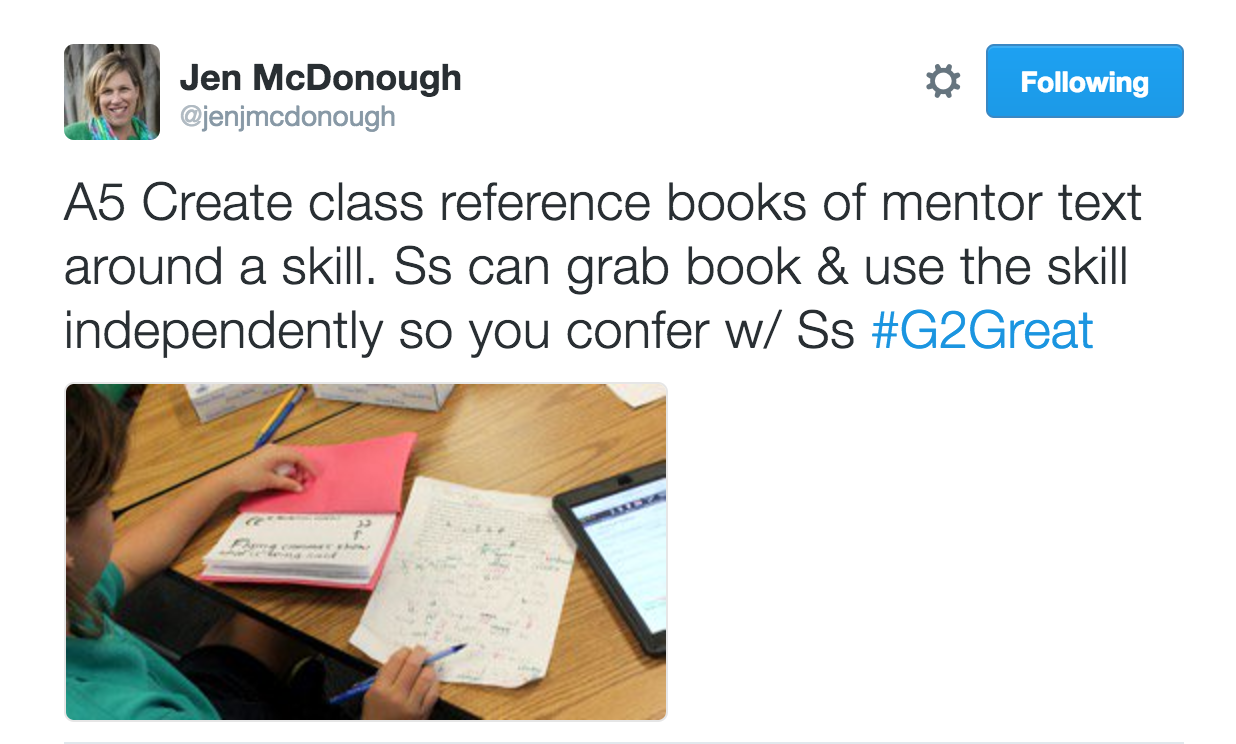By Amy Brennan
Sitting at the computer, my jaw tightened and my stomach knotted up. I felt that uncomfortable feeling, the one that comes when I know it is going to get messy. When I know it would be easier to step back, rather than lean in and embrace the mess or uncertainty that comes with difficult conversations and ultimately leads to a greater reward – deeper understanding. This was how I felt when we were planning the questions for the November 10, 2016 #G2Great chat. This chat was part of a series of chats focused on Saying “NO” So We Can Say “YES” and in particular this chat focused on Saying NO to numerical data so we can say YES to Assessment that Informs.
My apprehension resulted from knowing what people say in response to hearing the word assessment or data. Over the past several years the word “assessment” has gained a rather negative connotation for a variety of reasons. Assessment and data have almost become “bad words” in some circles. The same implication is often associated with the phrase “data-driven instruction.” Fortunately, as I reflect on our chat, I do not see evidence that “assessment” and “data” are “bad” things or that educators view them in this light. I see that there is hope in education, as teachers recognize that data and assessment are pieces of our students, pieces that tell the story of the whole child. As educators we acknowledge this – we need to know where our students are if we want to advance learning. One step further, our students need to know where they are if they are to advance their own learning.
Watch as the story unfolds…
Brene Brown, known for her Ted Talk and research that led to her books Daring Greatly and Rising Strong, has been referred to as a researcher storyteller. I am reminded of words spoken by Brene Brown, “Stories are data with a soul…” If we flip this idea we can consider that in using assessment we can derive data that builds the stories of our students — our “whole students” not just one data point, but several. Several data points that tell us the story of our students as learners. We can look through all types of data and find patterns, patterns which cause us to dig deeper and support our students’ learning.
Remember everyone has a story…
On my short lunch break one day I was standing in the local Walgreen’s in the check-out line, tapping my foot, checking and rechecking the time on my phone. “This line is moving sooooo slow,” was the protruding thought in my head. There was no clear reason for it that I could see except that it appeared to me that it was moving in super slow motion. This in no way was conducive to a teacher’s already short lunch break. My agitation grew. Finally I was next in line and I looked up from checking the time on my phone to catch the end of the conversation the cashier was having with the customer in front of me. In my hurried mind I wondered why they were talking so much. Seriously? I needed to get back to school! As I looked up to the cashier’s face her smile caught my attention. She was an older women, with short, curly, gray hair. But her smile was captivating. Her smile was so deep and genuine, and then I glanced to her eyes they seemed to smile too. My curiosity set in at that moment as I stepped forward and she asked me, “So dear, what is your story?” I must have looked confused because then she followed up with, “Aw, honey everyone has a story, tell me yours.” I hold this moment in my mind so often because it reminds me that each and every one of us has a story. We just need to make the time to listen for it. Data tells us the story of our students, but only if we make the time to listen to it. We cannot just glance at numbers alone and make plans for learning. We need to take the numbers along with all the other research we gain from informal assessments and build the story of our students’ learning.
Go deeper into the story…
When we read and go deeper into a story we notice patterns, patterns possibly in how characters might react to differents situations or other characters and then we make inferences about that character based on those patterns. In studying data,we need to dig deeper to make it meaningful. We need to find the patterns across different data points and gain a clearer understanding of what our students know, how they learn and how we can advance their learning. We need to look at formal and informal data, quantitative and qualitative data and then talk to our students, watch as they learn and respond to each iteration in learning.
Make sure students know their own story…
“It’s not about the data – it’s about interpretation. What’s the story underlying all these data?” John Hattie in this video talks about making learning visible and understanding the story of all the data. Hattie’s mantra, “Know Thy Impact” relies on understanding the impact that one’s own teaching has on students’ learning. If we want to advance learning in our classroom it requires that we know our impact. This is formative assessment at its best. Teachers become evaluators of their own teaching and then help students to become their own teachers. In this way, we need to teach our students how to understand and evaluate their own learning. We need to help students to know and understand their own story, and to do this they need to look at the data and interpret the data. Students need to learn, reflect and revise their learning based on their own story.
Sitting at my computer, I look up at the Supermoon tonight, I feel a sense of clarity in the ideas that earlier left me feeling uncomfortable. Before my jaw was tightened, now it feels relaxed. Before my stomach was in a knot, now it is at ease. I feel hope and clarity because that discomfort has been resolved with understanding and that understanding puts the numbers in perspective. I know the numbers are part of each student’s story and the story continues to build day by day through formative assessment — data is powerful when you listen to the story.

